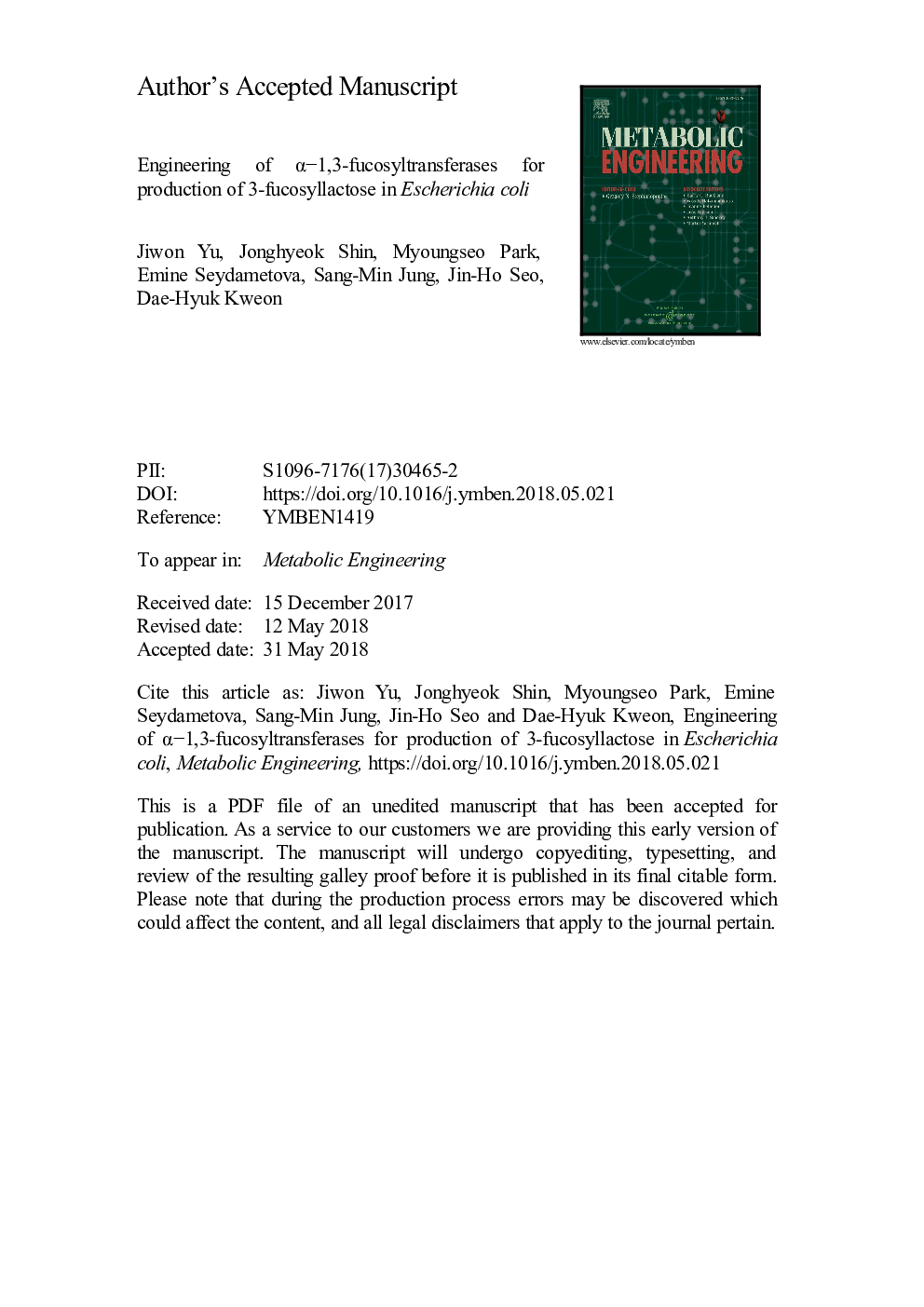| Article ID | Journal | Published Year | Pages | File Type |
|---|---|---|---|---|
| 6494055 | Metabolic Engineering | 2018 | 37 Pages |
Abstract
Fucosyllactoses (FLs), present in human breast milk, have been reported to benefit human health immensely. Especially, 3-fucosyllactose (3-FL) has numerous benefits associated with a healthy gut ecosystem. Metabolic engineering of microorganisms is thought to be currently the only option to provide an economically feasible route for large-scale production of 3-FL. However, engineering principles for α-1,3-fucosyltransferases (1,3-FTs) are not well-known, resulting in the lower productivity of 3-FL than that of 2â²-fucosyllactose (2â²-FL), although both 2â²-FL and 3-FL follow a common pathway to produce GDP-L-fucose. The C-terminus of 1,3-FTs is composed of heptad repeats, responsible for dimerization of the enzymes, and a peripheral membrane anchoring region. It has long been thought that truncation of most heptad repeats, retaining just 1 or 2, helps the soluble expression of 1,3-FTs. However, whether the introduction of truncated version of 1,3-FTs enhances the production of 3-FL in a metabolically engineered strain, is yet to be tested. In this study, the effect of these structural components on the production of 3-FL in Escherichia coli was evaluated through systematic truncation and elongation of the C-terminal regions of three 1,3-FTs from Helicobacter pylori. Although these three 1,3-FTs contained heptad repeats and membrane-anchoring regions of varying lengths, they commonly exhibited an optimal performance when the number of heptad repeats was increased, and membrane-binding region was removed. The production of 3-FL could be increased 10-20-fold through this simple strategy.
Related Topics
Physical Sciences and Engineering
Chemical Engineering
Bioengineering
Authors
Jiwon Yu, Jonghyeok Shin, Myungseo Park, Emine Seydametova, Sang-Min Jung, Jin-Ho Seo, Dae-Hyuk Kweon,
